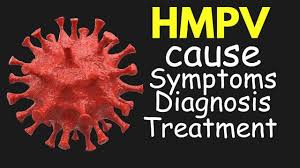The Cleanest River in India
The cleanliness and health of rivers in India have been a growing concern in recent years. Rivers are integral to the cultural, agricultural, and economic landscape of India, but many have been subjected to pollution due to industrial discharge, sewage, and waste. However, one river stands out as a beacon of cleanliness: the Mahi River, which has been recognized as the cleanest river in India.
The Mahi River’s Recognition
In recent environmental surveys and assessments, the Mahi River, which flows through Rajasthan and Gujarat, has earned the title of the cleanest river in India. The river has shown remarkable improvements in its water quality, leading to a significant decrease in the pollution levels that have plagued many other Indian rivers. The recognition was made based on data from the Ministry of Jal Shakti and various environmental studies that focused on water purity and the reduction of pollutants in the river.
Efforts Towards River Cleanliness
The Mahi River’s journey towards becoming the cleanest river in India can be attributed to several key initiatives. These efforts include the construction of sewage treatment plants, waste management strategies, and strict regulations on industrial effluents. Local communities and environmental groups have also been instrumental in these efforts, raising awareness and engaging in river conservation activities. The role of governmental and non-governmental organizations has been crucial in making this achievement a reality.
Environmental Impact of Clean Rivers
The cleanliness of rivers like the Mahi has far-reaching environmental benefits. Clean rivers contribute to the improvement of local ecosystems, supporting biodiversity and providing fresh water for agriculture and human consumption. Moreover, cleaner rivers play a vital role in preventing the contamination of groundwater, ensuring that local communities have access to safe and clean drinking water.

Why This News is Important
Boost to Environmental Awareness
The recognition of the Mahi River as the cleanest river in India is a significant milestone in India’s ongoing battle against river pollution. It highlights the effectiveness of sustained efforts by both the government and the local communities to address the issue of water pollution. For students preparing for government exams, understanding these efforts is crucial, as it provides insight into India’s environmental policies and challenges, a common topic in exams related to general studies, ecology, and sustainable development.
Impact on Water Conservation Policies
The Mahi River’s success story has the potential to influence water conservation policies across the country. As India faces increasing water scarcity, initiatives like these can inspire other states to adopt similar measures for river conservation. Government exam candidates, especially those preparing for civil services, should be aware of such policies as they may form the basis for questions on environmental conservation and governance.
Historical Context: Background Information Related to the News Story
India’s rivers have been a significant part of its culture and economy for centuries. The rivers, from the Ganga to the Yamuna, have sustained civilizations and played a critical role in agriculture. However, over the last few decades, rapid industrialization, population growth, and urbanization have led to widespread pollution of these rivers.
The National River Conservation Plan (NRCP), launched by the Indian government in the 1990s, aimed to clean up the country’s major rivers, with a focus on reducing pollution levels. The success of these programs, particularly in smaller rivers like the Mahi, represents a shift toward more localized and community-driven conservation efforts. As the cleanest river, the Mahi serves as an example of how proactive environmental management can restore the health of natural resources.
Key Takeaways from “The Cleanest River in India”
| No. | Key Takeaway |
|---|---|
| 1 | The Mahi River has been recognized as the cleanest river in India due to its improved water quality. |
| 2 | The river’s cleanliness is the result of initiatives such as sewage treatment plants, waste management, and strict industrial regulations. |
| 3 | The recognition of the Mahi River emphasizes the importance of local communities and environmental groups in conservation efforts. |
| 4 | Clean rivers contribute significantly to the environment, promoting biodiversity and ensuring access to safe drinking water. |
| 5 | The Mahi River’s success can inspire other states to adopt similar policies for river conservation in the future. |
Important FAQs for Students from this News
What is the cleanest river in India?
- The Mahi River has been recognized as the cleanest river in India based on water quality assessments.
What efforts were made to clean the Mahi River?
- Key efforts included the construction of sewage treatment plants, waste management initiatives, strict industrial discharge regulations, and community involvement in conservation activities.
Which states does the Mahi River flow through?
- The Mahi River flows through the states of Rajasthan and Gujarat.
What are the environmental benefits of clean rivers like the Mahi River?
- Clean rivers support biodiversity, ensure access to fresh water, and prevent groundwater contamination, benefiting both local ecosystems and human communities.
How does the cleanliness of the Mahi River affect water conservation policies in India?
- The success of the Mahi River’s cleanliness serves as a model for other states, potentially influencing national water conservation and river management policies.
Some Important Current Affairs Links













